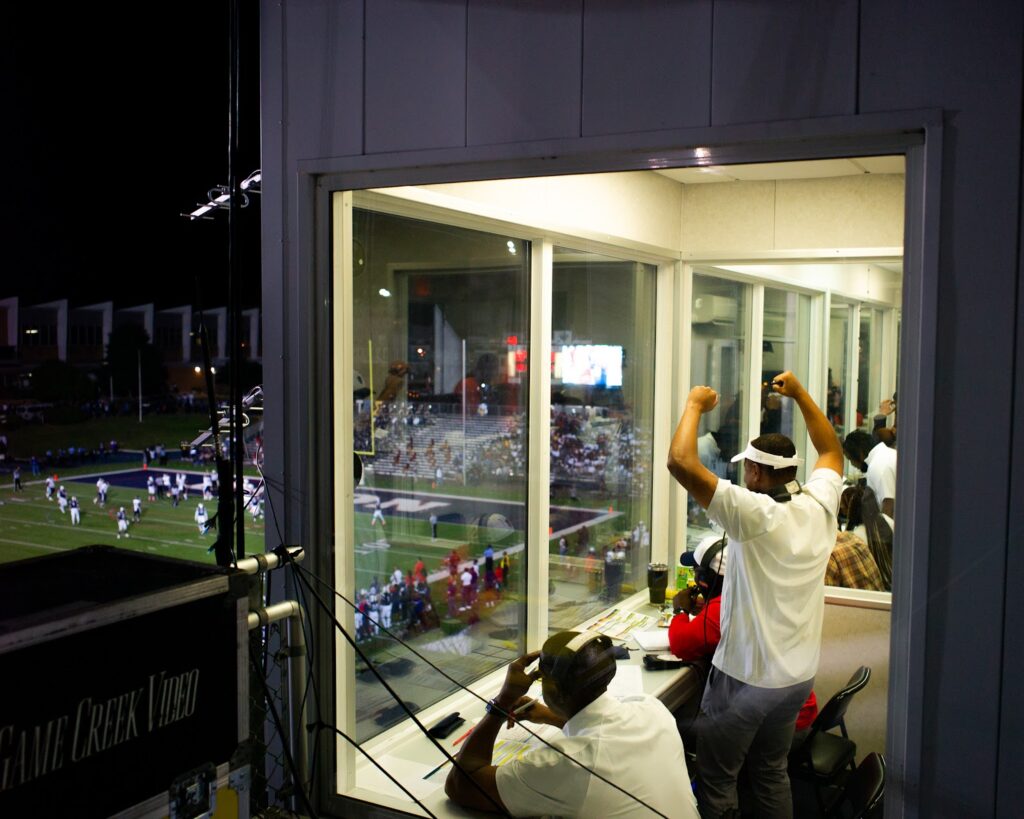Howard University’s athletics, like many institutions, looks to maintain, grow and preserve. The institution’s goals manifest through their economic interests, as they intertwine with the creation of wealth through the manufacturing of culture—particularly that of college culture. But what does this look like for a non-football-oriented school in the midst of a pandemic? Howard isn’t Michigan State, where football is one of the main economic engines for the school, so what opportunities and economics drive forward the engine of such an established and necessary institution as college football?
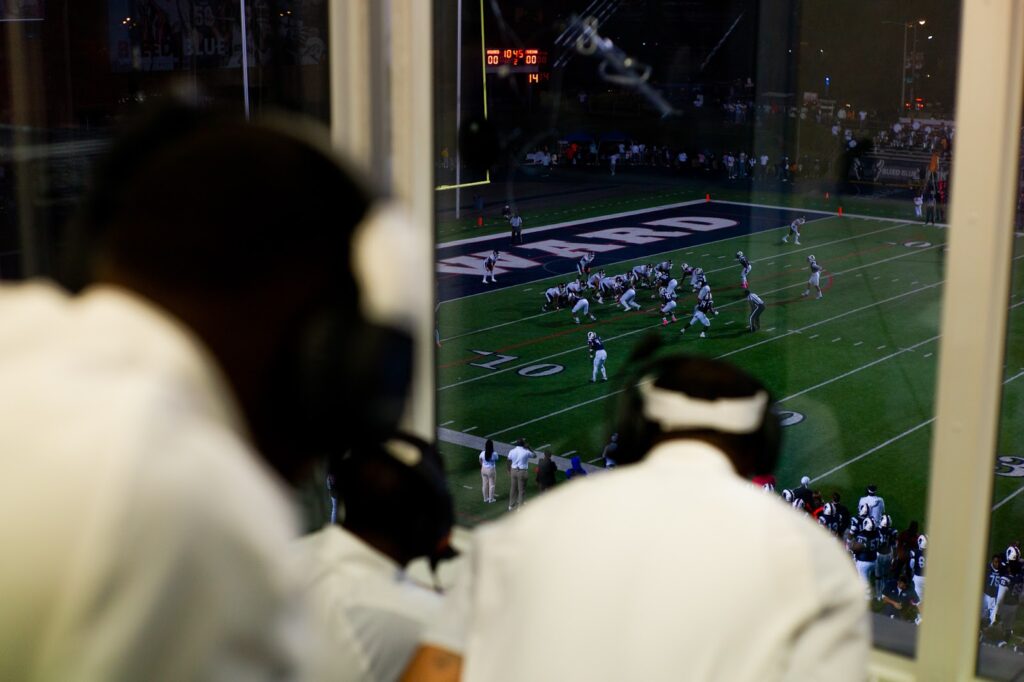
Funding for HU sports is brought in through donations and sponsorship. Being a private institution, Howard receives funding from private interests to maintain the institution, with the expectation that there will be some return on investment. This leaves one way forward for fundraising: marketing football as an intrinsic force within the Howard experience, ensuring bodies at games and an advertising market for sponsors. With this comes the added benefit of alumni support, corporate partnerships and a space for students to engross themselves within Howard’s culture. What remains, however, is the need to generate capital for the continuation of the program. According to a Howard athlete who wishes to remain anonymous, “Most monetary involvement is based on how interesting the sport is. Funding relies on donations, and donations rely on spectacle. The bigger the spectacle, the bigger the donation.” The spectacle of Howard’s Football program isn’t just the game; it consists of the Showtime band, DJs from local radio stations, majorettes, alumni tailgates and step shows. All of this in context leads to a uniquely HBCU-ish spectacle.
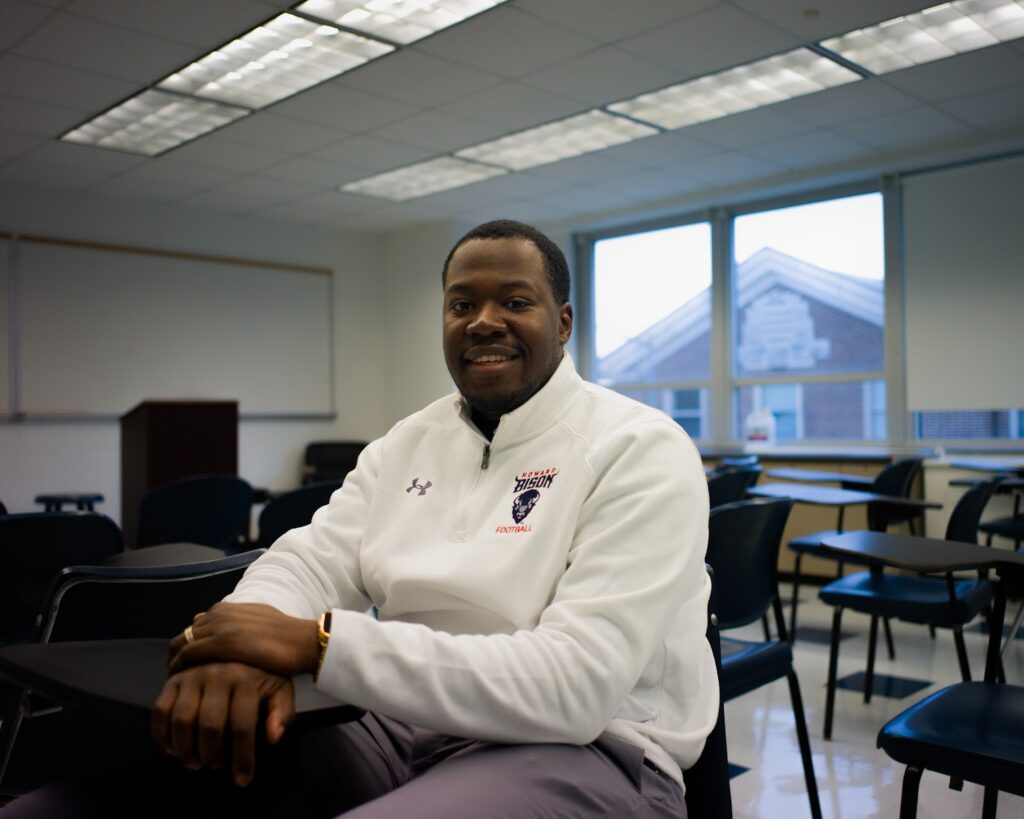
For football, in particular, there’s a renewed interest in the role it plays at Howard and its effect on campus. According to an anonymous source within Howard athletics, football has the most extensive roster of players of any other sports team, receiving around 25% of the athletic budget in a given fiscal year. This is a serious investment into scholarships for students and coaching staff, infrastructure maintenance, travel, marketing and equipment. It’s not out of the question with nearly a quarter of the school’s sports budget placed on football; there might be questions of what expectations are set on the coaches and players. David Davis, the director of football operations, relayed that the only emphasis is “making sure we continue to do what we set out to do…they[administration] know it takes time.” The goal, of course, is to win games. Still, there’s an opaque nature around the offices of Burr Gymnasium and a similar story to the financial aspects of the football program.
While corporate sponsors alleviate some of the burdens, there’s an ongoing expectation that collegiate football teams will have paid games. These paid games allow large football-oriented schools to spend large amounts of money on funding programs. Essentially, paid football games to enable smaller teams to gain funding while bolstering the two programs. This year Howard began their season in September with a blowout pay game against the University of Maryland. The final score was 62-0, and the total payout was just over three hundred thousand dollars.
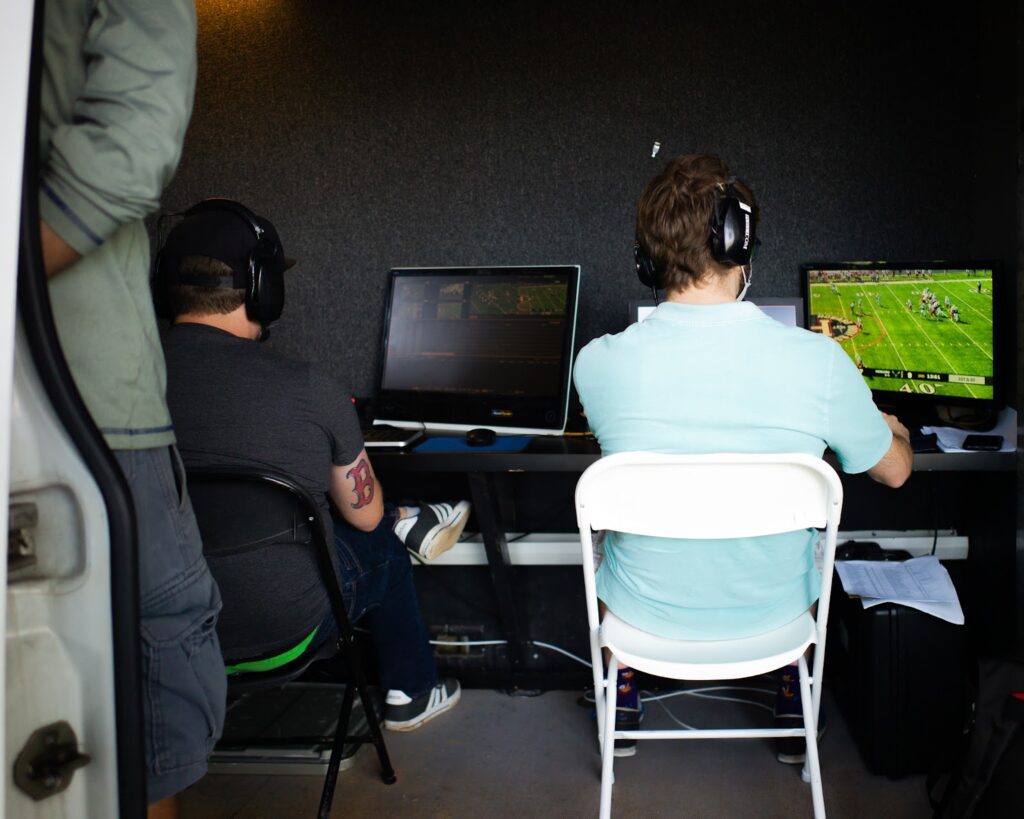
Alongside this, another revenue stream comes from broadcasting rights. With its connections to ESPN+ and other networks, the school allows for the schools’ influence to stay present in the lives of alumni. According to an anonymous source within Howard athletics, the deal isn’t currently viable. The school hires outside contractors to film and broadcast the games live at a loss. During most games, just below the bleachers lives a media van wired into the eyes and ears that capture every moment of the game; mics and cameras strategically placed for the best image and sound to capture an authentic live experience. The school is looking for the best amalgamation of experiences to present to the alumni.
The bottom line of the athletic program is ultimately how many people watch the games and support because this is reliant on a captive audience, and there’s a certain expectation to keep the audience captive. The internal logistics of the program—that of hiring staff and athletes, maintaining facilities, and funding the program—become subservient to the true nature of the institution of collegiate athletics, the generation of culture.
What does this culture look like in action, and what links does it have to the economics that have already been discussed?
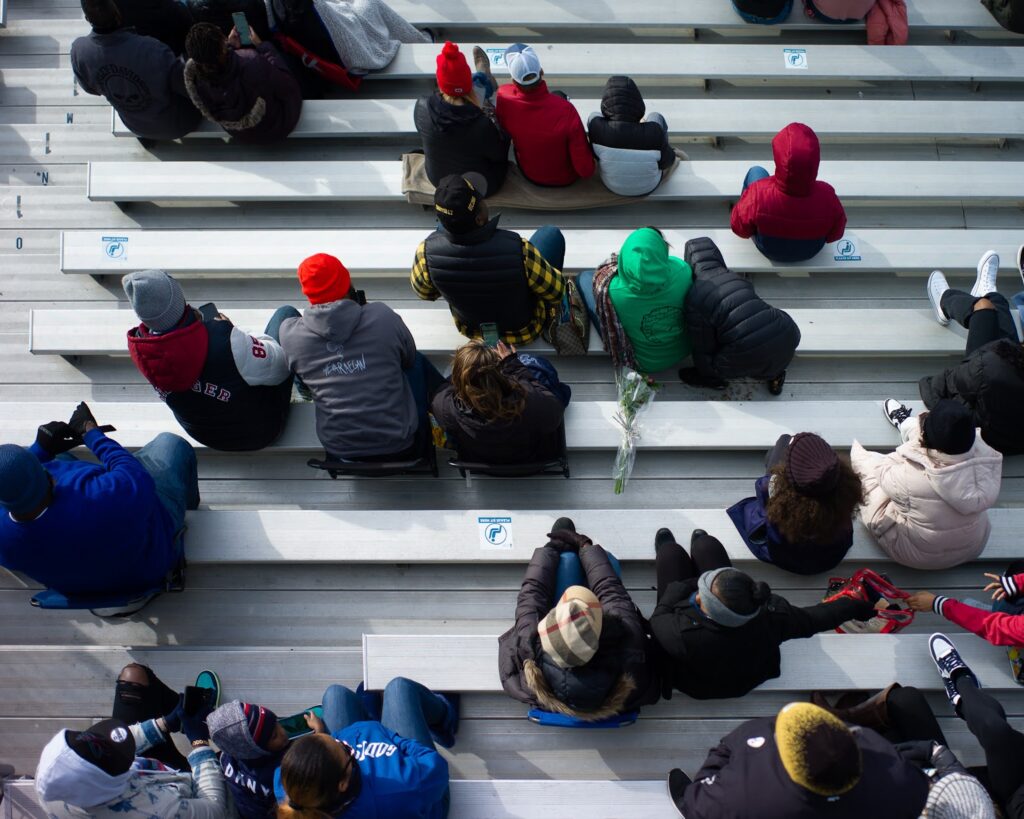
The game takes on cold anxiety, the energy pushing and pulling with the start and stop of plays. Hard seats press up from below, and a brisk November wind whips around buildings just beyond the stadium. I hear someone crack a joke about the lack of a concession stand while scaling the bleachers with a pizza from dominos. So, what is the culture that is being created here?
From the second row of the grandstands, a 2D head floats above the crowd as shouts of encouragement puncture the brisk air. Serina McMillan, HU 23, is holding a fathead of her boyfriend Faraji Woodson, the team’s kicker. For McMillan, the game offers “an insane atmosphere,” she says with a smile. She picks back up, “I’ve been to every home game… I just like to show my support.” Close ties to the players strengthen the connections to the team, and for people like Serina, it can be nice to have a shared space to bond with a loved one.
Halfway through the second quarter, the stands begin to fill up. The score remains somewhat unimpressive, but the halftime show is imminent. A steady stream of people slowly packs themselves up the chilly steel steps while the marching band, majorettes and ensemble cast take their positions behind the opposing team. I can’t do these halftime shows justice with words, but I will say if you know, you know. The show is the highlight of the game, and within minutes after the marching band has left the field, the stream of people that had just entered trickle from the stands back towards campus.
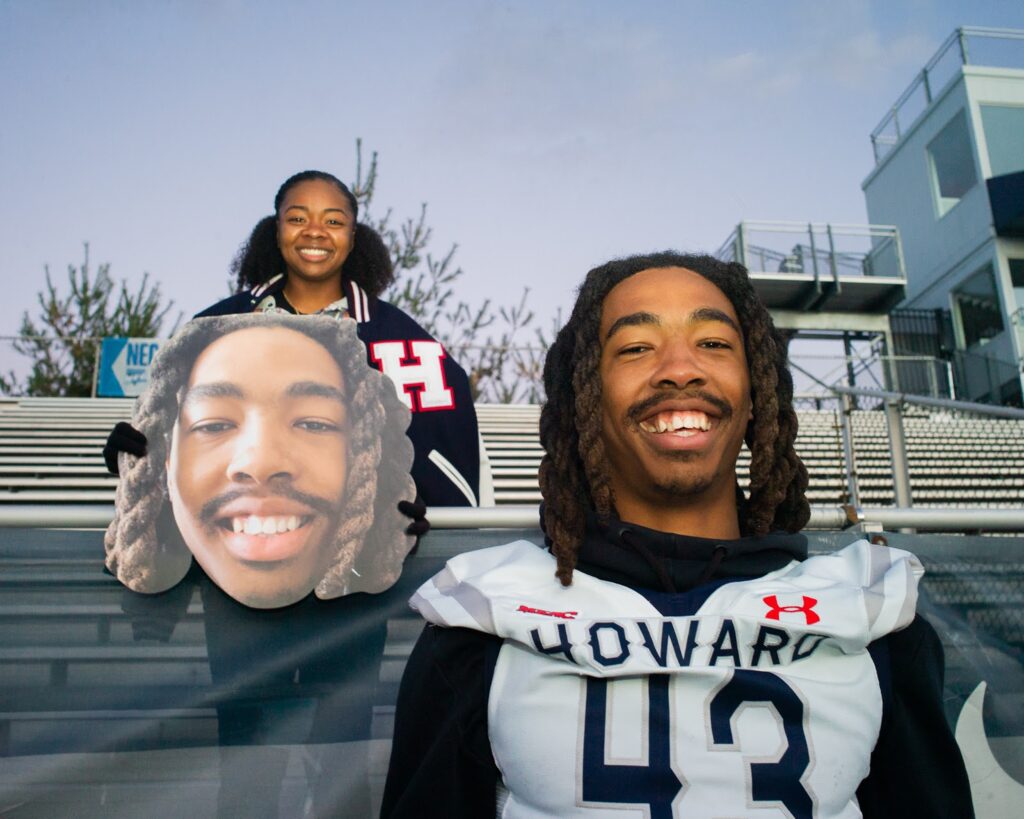
Despite the complex nature of the last two years, Covid has been a disruptive force in the college experience, especially within Howard, prioritizing a slow rollback into college life. For Darius Spencer, HU24, the football games offer a look into the college experience that he’d been promised. When asked why he was here, Spencer responded, “The football game is a perfect place to forget about online classes and the protests,” he says with a glib smile. Something is comforting in his smile as he warms his hands, rubbing them together in the November air. The apolitical nature of sports is somewhat of a curiosity, considering the diverse cast of members within the ranks of the student-athlete body—the necessity of apolitical stances that are maintained for college athletes. Dylan West, a freshman on the football team, emphasized the progressive nature that college football is trying to embody. Despite the football program’s attempts to support progressive change, West remained adamant that “you don’t have a say because you’re obligated to that contract, solely to that contract. So you don’t have the leeway to support causes and stuff.” The limited scope of political stances for student-athletes is somewhat contradictory. It seems that there is a need for apolitical ness to serve as a blank canvas for potential sponsors. By not taking on allegiances, sports remains ‘neutral.’ This lack of political acts both as a further divorce for connection and a welcome embrace of simplicity, as the program focuses on ‘just the game.’
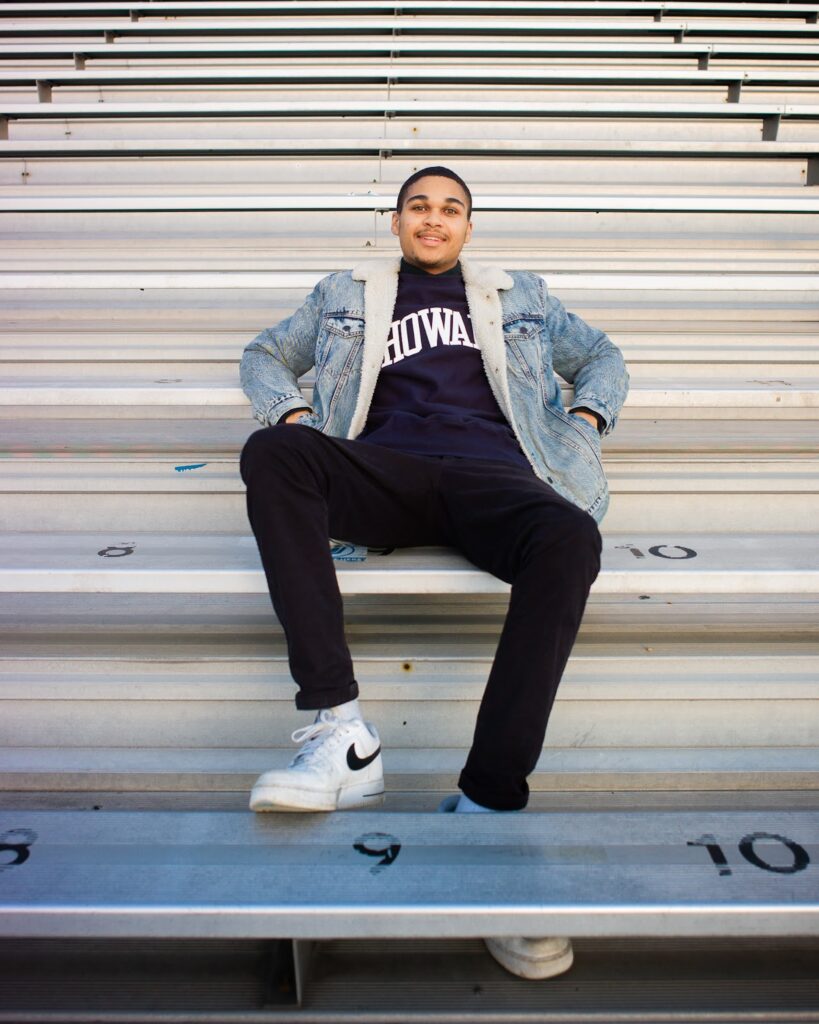
As a group of Howard hopefuls wandered through campus, I sought out one of the tour guides, sophomore Nia Williamson. With swift insight, she informed me of the aspects of the school that were being put on display and why she chose to include the football game as a part of the tour. For Williamson, “it shows camaraderie and the game is a lot of fun, that and it’s something to do.” This sport that has millions of dollars being poured into it so commonly referred to as ‘something to do’ should come as more of a shock. Unfortunately, this remains the common belief of the student body. How could something so allegedly intrinsic to the HU experience be brushed off so easily? It only begs the question, if football weren’t at the school would the students remain as connected to the spirit of Howard. For Williamson, “if the football team didn’t exist, I’d still be connected to Howard. There are other ways to get involved with the school.”
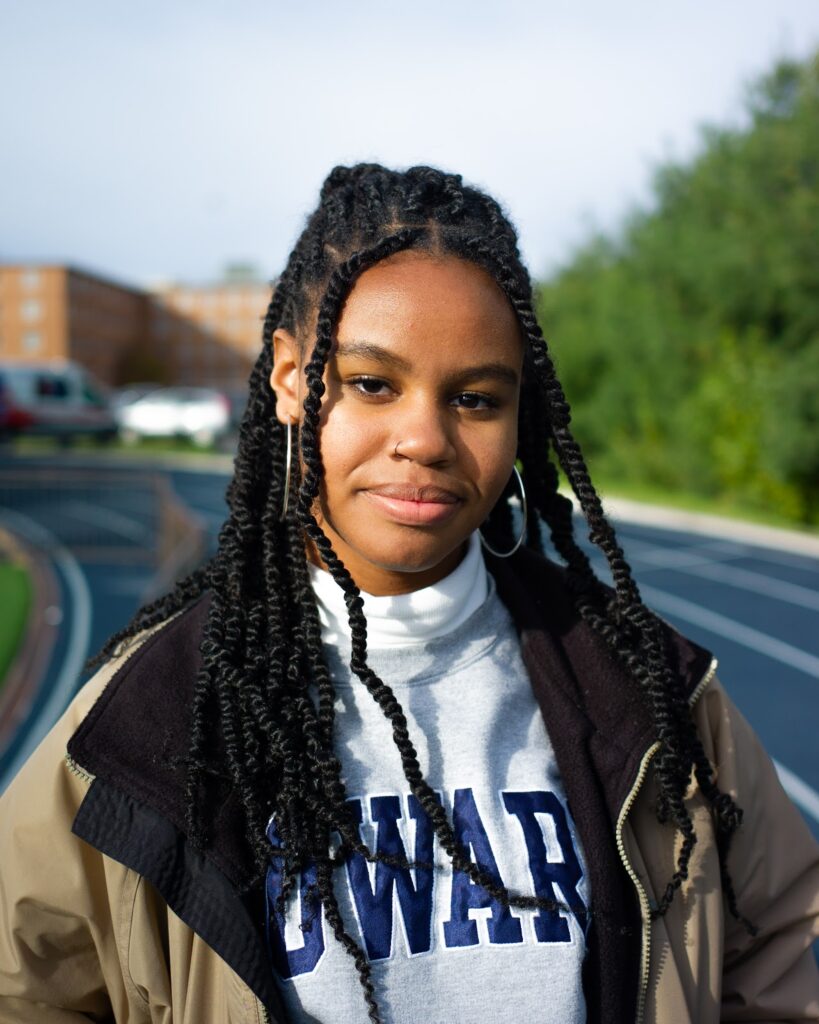
The HBCU experience that was promised to students, one of step shows, homecomings and an engaging environment has been all but stripped from the Howard student body due to the events of the past two years. Collegiate football offers an attempt at normalcy, embodying the school spirit and joy that has been lacking in the last two years of the pandemic. Despite the program’s attempts at culture generation, the feeling remains cold and stale, evidence of an administration out of touch with the needs of the students. It’s no shock that the football program relies on students, but the underlying failures are evidence of more significant problems within the school.
